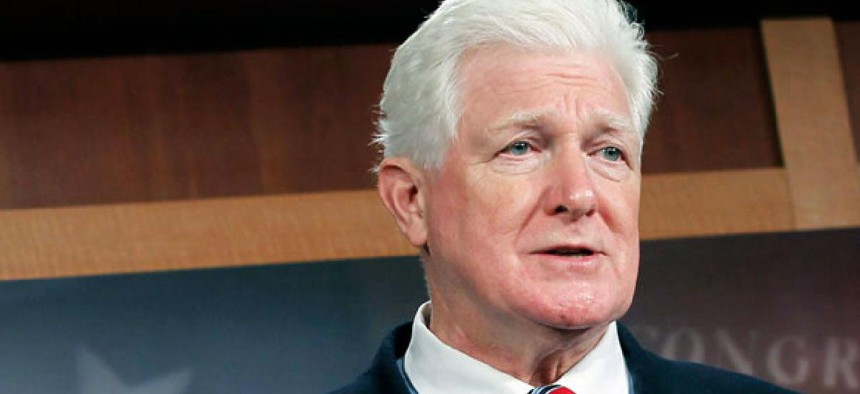
Carolyn Kaster/AP
Senior Executive Service due for a shakeup, lawmaker says
Rep. Jim Moran, D-Va., calls for infusion of talent from outside the federal ranks.
The federal government’s cadre of senior executives could use some shaking up to “bring in people who are looking for new challenges,” a senior lawmaker said Wednesday.
“We’ve got too many people, even in managerial positions, who are protecting their comfort zone,” said Rep. Jim Moran, D-Va.
“The federal government needs to have its ‘A’ team on the field,” he added. “Unfortunately, I don’t think we do.”
Moran’s remarks came during an event sponsored by the Partnership for Public Service in which a group of federal officials discussed a new report by the Partnership and consulting firm McKinsey & Company on mobility within the Senior Executive Service.
The report found that 48 percent of senior executives have never changed positions, and only 8 percent have switched agencies. It also determined that only 7 percent of SES members were hired from outside government.
“This is an absolute disgrace that so few senior executives are coming from outside the agency,” Moran said. “We’ve got to get people with a greater breadth of experience.” An infusion of private sector talent also would serve to make business leaders more aware of how the federal government actually works, he said.
Moran and panelists at the event said the lack of mobility within the SES undermined what they characterized as a key goal of the 1978 Civil Service Reform Act: creating a corps of senior managers who would move from position to position and agency to agency, using their skills to improve a variety of federal operations.
Carol A. Bonosaro, president of the Senior Executives Association, which represents SES members, challenged that interpretation. Citing testimony by Alan K. Campbell, the first director of the Office of Personnel Management after it was created under the Civil Service Reform Act, Bonosaro said mobility goals centered on the ability to move executives around within agencies. Mobility across agencies, she added, “was not the big premise of the SES.”
Mobility, Bonosaro said, “has to be managed intelligently, so it benefits both the agency and the executive. So it has to be an option, not a requirement.”
“I don’t think it’s ever going to be the norm” for executives to routinely move across agencies, she said, because of the “very diverse missions” of federal organizations.
Bonosaro also said the figures on SES members who have never changed positions within the executive corps could be skewed by the fact that OPM statistics show the average SES member has been in his or her job for only 3.4 years.
Of Moran’s remarks, Bonosaro said, “members of Congress have a lot on their plates, and with all due respect, Rep. Moran was not as well-informed as he thought he was." Many SES members, she said, routinely work from 6 a.m. to 9 p.m: “I don’t know who’s sitting in a comfort zone.”
At the Partnership for Public Service event, Joanne Weiss, chief of staff at the Education Department, said a lack of mobility among career executives was a constraint on department operations. When it came time for Education to distribute nearly $100 billion in economic stimulus funding, she said, fewer than 20 senior executives, all eligible for retirement, were the “go-to people for everyone in the agency.”
“There’s not a good bench in place,” Weiss added. “It’s led to some insular thinking.”
Elizabeth Kolmstetter, deputy chief human capital officer in the Office of the Director of National Intelligence, said ODNI benefited from having a formal program, mandated by Congress, requiring executives to serve in multiple agencies in order to advance in their careers. The National Geospatial-Intelligence Agency in particular, she said has a strong rotational program.







